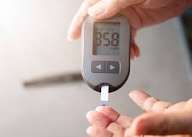
India's Diabetes Crisis: Why Blood Sugar Control Must Become a National Priority
With over 100 million people living with diabetes, India has earned the unwelcome title of the diabetes capital of the world. Once considered a disease of the affluent, diabetes now affects both urban and rural populations across age groups. Health experts are sounding the alarm, urging individuals and policymakers alike to treat blood sugar control as a public health emergency.
A Growing Epidemic According to the Indian Council of Medical Research (ICMR), nearly one in 10 Indians suffers from diabetes, and the numbers are rapidly increasing due to sedentary lifestyles, unhealthy diets, rising obesity rates, and genetic predisposition.
“What's worrying is that many people are unaware they have diabetes until complications set in,” says Dr. Neelam Kapoor, Endocrinologist at AIIMS, Delhi. “Unchecked, diabetes can silently damage the heart, kidneys, eyes, and nerves.”
Type 2 Diabetes: The Common Culprit The majority of diabetes cases in India are Type 2, which is largely preventable and manageable through lifestyle changes. Type 1 diabetes, although less common, typically emerges in childhood or adolescence and requires lifelong insulin therapy. “We are seeing younger patients than ever before, even teenagers, being diagnosed with Type 2 diabetes,” says Dr. Kapoor. “This shift is closely linked to poor dietary habits and lack of physical activity.”
The Power of Prevention Experts stress that diabetes is not inevitable, and even those with a family history can delay or prevent its onset through healthy choices. “A diet rich in fiber, whole grains, vegetables, lean protein, and low in refined sugars and saturated fats can drastically reduce the risk,” says Dr. Ramesh Verma, Consultant Diabetologist.
“Equally important is regular exercise—just 30 minutes of walking a day can work wonders.” Weight management, stress reduction, and quitting smoking are also key preventive measures. Monitoring is Crucial For those already diagnosed, regular monitoring of blood sugar levels is essential to prevent long-term complications.
Home glucometers and HbA1c tests (which reflect average blood sugar over three months) are commonly used tools. “Strict blood sugar control reduces the risk of heart disease, stroke, kidney failure, and blindness,” Dr. Verma notes. “But it requires consistent effort—not just during flare-ups, but every single day.”
Role of Medication and Insulin Depending on the severity, doctors may prescribe oral medications, insulin, or both. However, compliance remains a major issue. “Many patients stop medication once symptoms subside, which can lead to dangerous spikes,” warns Dr. Kapoor.
“Diabetes doesn’t go away—it needs lifelong management.” Technology as an Ally With the rise of health apps, wearable glucose monitors, and telemedicine, patients now have better tools to manage diabetes from home.
These technologies not only improve compliance but also empower individuals to take control of their condition. Public Awareness Still Lags Despite the availability of treatments and tools, public awareness remains low. Misconceptions and stigma around diabetes often delay diagnosis and care. Government initiatives like the NPCDCS (National Programme for Prevention and Control of Cancer, Diabetes, Cardiovascular Diseases and Stroke) are working to bridge this gap through free screenings and educational campaigns at the grassroots level.
A Collective Fight Controlling diabetes requires more than just individual willpower—it demands a nationwide shift in awareness, lifestyle, and healthcare delivery.